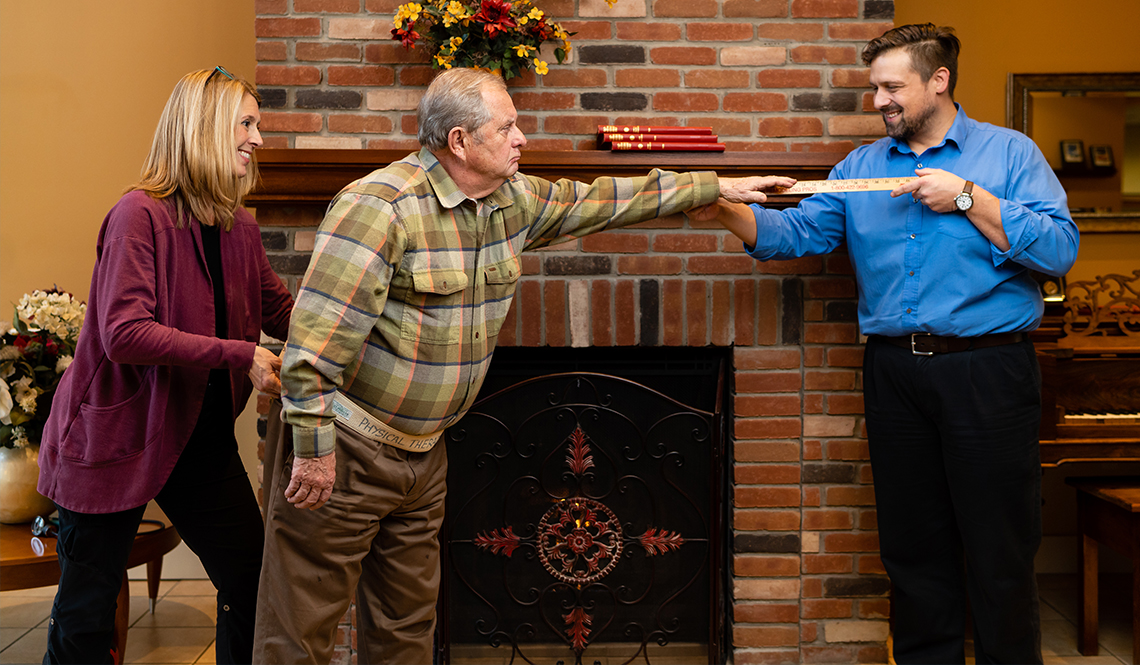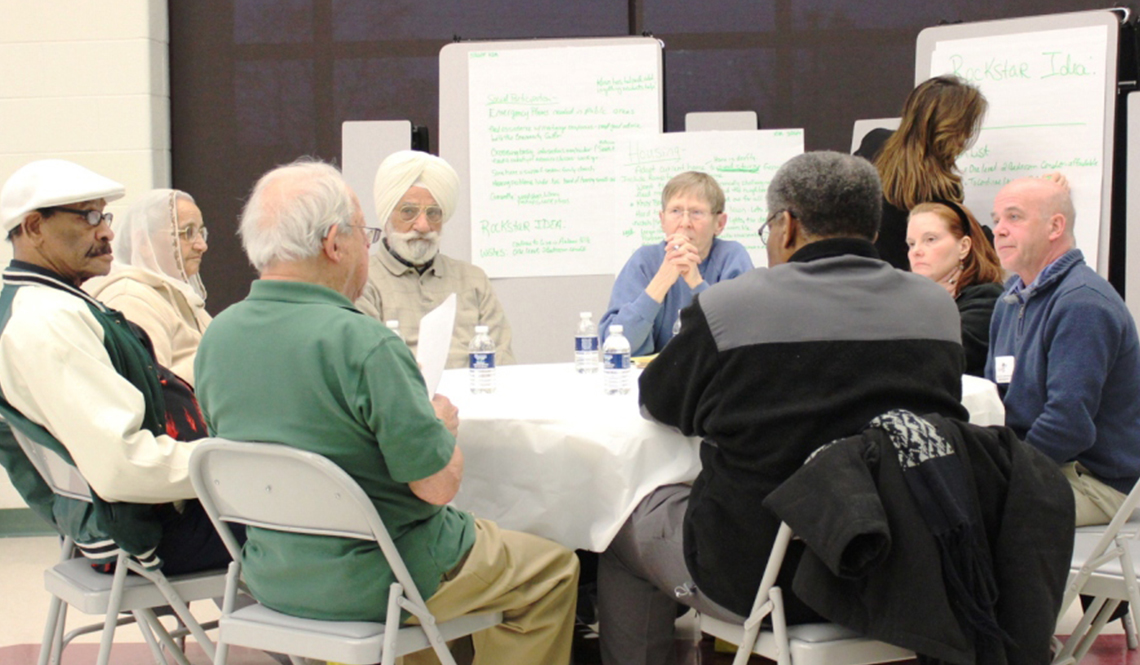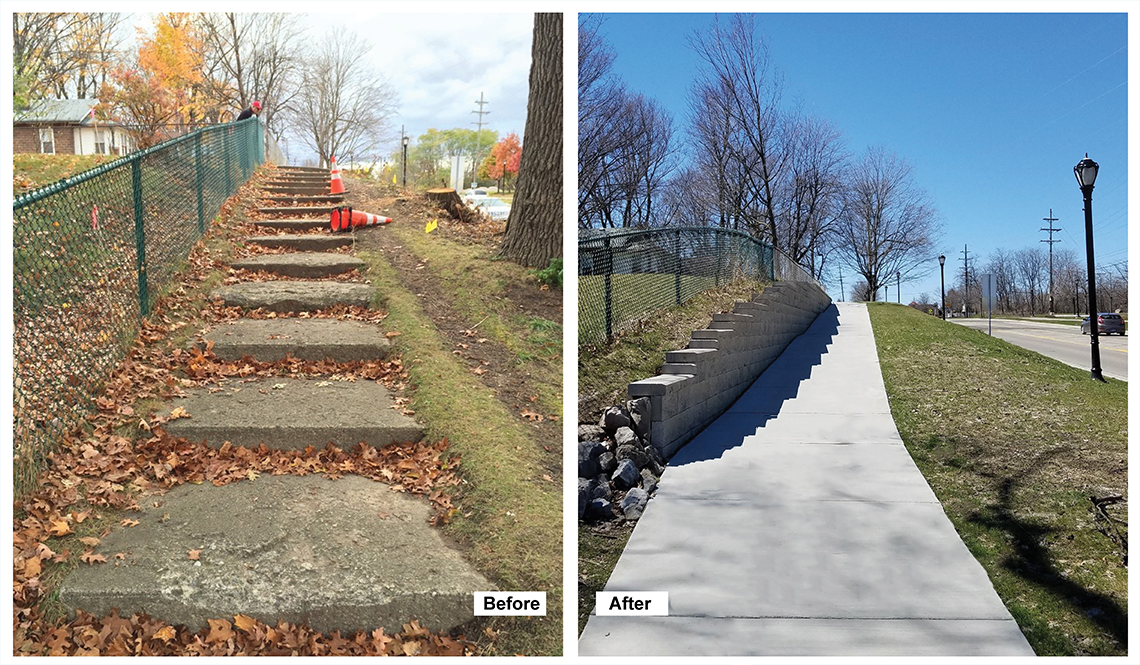Age-Friendly Auburn Hills, Michigan
What's been achieved since joining the AARP Network of Age-Friendly States and Communities

Photo from Age-Friendly Auburn Hills
Auburn Hills’ first steps toward becoming an age-friendly community began with organized "Community Conversations," a series of 16 public meetings held at churches, schools and other neighborhood locations. The ideas from the meetings became the basis for the city’s first age-friendly action plan.
ACTIVITIES AS OF DECEMBER 2021
Member Profile
The city of Auburn Hills, Michigan, located 25 miles northwest of Detroit, is home to roughly 24,000 residents, 11.5 percent of whom are age 65 or older.
Planning, Together
"City officials understand the challenges that lie ahead for the community, and that adjustments must be made. Questions we've asked include: What happens when the city’s 75-plus population almost quadruples in size? What happens when the number of residents over 65 begin to exceed the number of children enrolled in school?"
— Steve Cohen, Auburn Hills Director of Community Development
Auburn Hills is often called “Little Big Town.” Because the city hosts some of the largest automobile and auto-related companies in the world, its population expands to more than 100,000 during the day, then shrinks to 24,000 at night.
Initiative Name: Age-Friendly Auburn Hills
Network Member Since: 2013, when Auburn Hills became the first municipality from Michigan to join
Government Type: Seven elected city council members appoint a city manager who handles daily operations. The mayor presides at all city council meetings and has a vote equivalent to those of the council members.
Local Age-Friendly Leadership: Age-Friendly Auburn Hills is led by Karen Adcock, Auburn Hills’ Director of Senior Services, and Steve Cohen, Director of Community Development. Together they are responsible for overall operations and serve as liaisons to city government and community partners.
Reason(s) for Joining: Karen Adcock, who has been working on behalf of Auburn Hills’ older residents since 2000, explains: “I was at a workshop where Karen Kafantaris of AARP Michigan was presenting. She spoke about a local community concept in which local leaders engage residents, receive feedback and figure out the ‘roadmap’ to follow.”
Adcock continues: “I’m sitting there thinking, ‘Yes!’ At Senior Services, I had a bucket list of things I wanted to accomplish for the older adult population but wasn’t able to do. It was like age-friendly dropped in my lap, written out of my brain. ‘This is how you do it!’
“I did a presentation to the planning commission about age-friendly practices, Adcock adds. “Michigan also has a program called Communities for a Lifetime, which was a great segue because it got the conversation started. I told the planning commission about the ways age-friendly could help set the footprint and give us direction for both community planning and budget. The planning commission was right on board. The Auburn Hills City Council was as well.
“After that, we formed our age-friendly committee, which included business people and some medical professionals, and we started doing Community Conversations.” (See the box at the end of this article.)
The Financials: In addition to funding from the city, the initiative receives support from sponsorships and partnerships, such as with Oakland University (see "Participating in Pre-Injury PT" below).
Actions and Achievements
Auburn Hills developed its three-year, age-friendly action plan in 2015 and a five-year progress report in 2020. The steps taken thus far include the following initiatives.
Help With Home Repairs
The idea to create a reliable list of local home contractors for residents to reference came about after Adcock had heard, she says, “horror stories" from community members about repair experiences gone bad.
"As municipalities look to ensure their viability in the years to come, it is critical to engage with and learn about the needs of their growing senior population. We hope that our experience will inspire others to look at their community through a different lens."
— Karen Adcock, Auburn Hills Director of Senior Services
“Our 'Minor Home and Mobile Home Repair Program' hosts a list of contractors we’ve worked with that are licensed and insured,” she explains. The list is regularly checked and updated. A similar service, the 'Senior Home Assistance Repair Program' (SHARP), arranges for volunteers to help senior citizens and disabled residents with small home maintenance tasks such as changing lightbulbs or door locks.
Both programs are listed on the city's website, as are two season-specific initiatives: the "Lawn Mowing and Snow Plowing for Seniors and Persons With Disabilities" program and the "Fall Rake and Run" program, which is a service for homeowners over age 65 who need assistance clearing autumn leaves from their yards.
For homeowners interested in do-it-yourself guidance, Age-Friendly Auburn Hills partnered with the retailer Home Depot and the nonprofit Habitat for Humanity to present a workshop for homeowners with limited home repair experience. Home Depot set up stations throughout its local store where instructors taught home repair basics, such as how to change a washer in a leaky faucet or check dryer vents.
“Without this class I never would have thought of changing a furnace filter or covering the air conditioning unit during fall and winter seasons,” said one workshop attendee.
Auburn Hills has nine parks, 59 miles of pathways and 63 miles of sidewalks. But, Adcock notes, "there are disconnects in some of the sidewalks and pathways."
One downtown disconnect was especially disconcerting. "If you were walking on the sidewalk next to the main road, you’d suddenly come across several stairs," Adcock explains. "The path was essentially impossible to climb for someone using a cane, walker or wheelchair. So we worked with the public works department to change the path from steps into a slope. That was a big win for us.” (See the before and after images above.)
To help ensure future walkability, property owners undertaking new construction projects in Auburn Hills are now required to build sidewalks in front of their buildings.
Another pro-walking effort is the "Walk with the Doctor" program. Developed in partnership with the local health care system, doctors and healthcare professionals lead a weekly walk with local senior citizens. “It’s just a 20-minute casual stroll," says Adcock, noting that the program has been put on hiatus due to COVID-19, "but each outing includes a discussion about a health topic, such as hydration or blood pressure.”
Participating in Pre-Injury PT

Photo from Age-Friendly Auburn Hills
Oakland University physical therapy professors Sara Arena and Chris Wilson demonstrate how measurements are taken during a home-based assessment. The HOP-UP-PT program's "successful and unique partnership" with the city earned it an Auburn Hills Chamber of Commerce Strategic Partner Award.
When Auburn Hills Senior Center staff members reached out to the Physical Therapy Department at nearby Oakland University, a novel approach to accessing preventative care for seniors was born.
HOP-UP-PT stands for Home-Based Older Person Upstreaming Prevention Physical Therapy. Referrals to the program come from community-based senior centers rather than medical providers, which is the approach used for post-injury PT.
“The current healthcare paradigms typically refer individuals to physical therapy after an injury or health event has occurred,” says Sara Arena, co-founder of HOP-UP-PT and an associate professor of physical therapy at Oakland University. “However, physical therapists are well positioned to evaluate and provide skilled interventions that can prevent health declines or injury." (All 50 states, Washington, D.C., and the U.S. Virgin Islands now have provisions for some level of direct consumer access to physical therapy services without the need for a doctor’s prescription.)
In HOP-UP-PT, a physical therapist will come to a client's home and do a physical, environmental and health assessment. Based on those evaluations, the therapist will design a program of exercises to promote balance and endurance along with recommendations to improve home safety, nutrition and an overall healthy lifestyle. The program is administered during six home visits and three tele-health visits over seven months.
“We can see subtle changes that many times their friends and families do not see," Adcock shares about the older residents she sees at Auburn Hills' senior centers. "I had a couple of people who weren’t walking quite as well as they used to. I referred them to the program. HOP-UP-PT has been so great that we've expanded it to several senior centers and we're getting big grants for it.”
A long-term goal for HOP-UP-PT, says co-founder Chris Wilson, "is to integrate the program into the standard of reimbursable care for aging adults. Efforts to roll out HOP-UP-PT care nationally are ongoing.”
Housing Options for Aging in Place (or at least in Auburn Hills)

Illustration by Heartland Builders, LLC, provided by Age-Friendly Auburn Hills with permission
A floor plan example shows the types of "Universal Design" features and measurements that can make a residence more suitable for people of all ages and abilities.
Many of Auburn Hills’ residential neighborhoods have large lots that are physically separated from the noise and congestion of the city's commercial and industrial areas. "Auburn Hills is now working to evolve from a community with housing stock primarily designed for families to a community that welcomes all," says Cohen.
The city does have several types of housing options for older residents, including two independent living apartment complexes that offer reduced rental rates based on income; single-family homes; a gated community for people age 55-plus; two assisted living facilities and one skilled-care nursing home.
Every month, specialists representing the different housing options offer appointments to older residents and their families. Topics include the differences between independent living and assisted living; private pay costs and what insurance covers; making difficult choices about a nursing home placement; and tips on downsizing from a big home to a smaller space.
Another age-friendly approach to housing is the city's 2017 Universal Design and Visitability Ordinance to "strongly encourage, but not require, the implementation of universal design elements and features in new homes where feasible."
As an incentive for developers to incorporate universal design elements and features into their development proposals, Auburn Hills offers streamlined permitting and eligibility for consideration of zoning flexibility. To be considered eligible, 75 percent or more of the homes in a proposed development must include the following minimum universal design elements and features:
- A zero-step front door entryway
- A first floor master bedroom and bathroom with zero-step entry to shower
- 36-inch wide doorways and 42-inch wide hallways
- 60-inch wide maneuvering radius in the kitchen and bathrooms
- A first-floor laundry room
Lessons Learned (and Advice for Others)
Auburn Hills’ first steps toward becoming age friendly began with "Community Conversations." The ideas that came out of those meetings formed the basis for the city’s first action plan. Karen Adcock, who led the initiative, shared some successful strategies she used in conducting the meetings.
Go to the Residents
"We sent out flyers inviting residents throughout the city to come talk about how they want their community to be designed. We went to the people rather than have them come to us.”
Spread a Wide Net
“All departments were required to participate in meetings. We told them, ‘Your clients might be younger, but you've got co-workers who could have older parents. Every department deals with an older adult.’
“For one Community Conversation, we just invited local businesses and health care providers, because I wanted to know, from their standpoint, about their customer base. People who work in doctors’ offices, grocery stores, hair salons and flower shops all have a different perspective of their seniors or how they can reach out to them.”
Enlist Movers and Shakers
“The city council and planning commission attended and acted as facilitators, talking directly to residents. Our mayor introduced himself and talked about why these conversations were important for the community.”
Create a Festive Atmosphere
“We made each meeting like a party, with balloons and cookies. It wasn't like a gripe session! Each community conversation grew in numbers. Not just seniors attended, but people in their 30’s and 40’s also came. Why not? You are planning a community not just for the present, but for the future, as well.”
Set the Timer
“At every meeting, we had somebody who rang a bell after the discussion had lasted 15 minutes. Participants would then move to another station because we wanted them to circulate and maintain that synergy. The other thing is, if someone's focusing on something they don’t like in the community and they start into that conversation, it's often hard to redirect them.”
Set Doable Goals
“At the end of all our conversations, we had some 70 action plan ideas. So we met three more times, broke into groups, divided up the action items and pared them down to 20.”
Divide Ideas into Short-Term and Long-Term
“We figured out, okay, what's the low-hanging fruit? And what long-term goal had to be built into the budget? From there, we developed our timeline.”
No Bad Ideas
“All suggestions are called Rock Star ideas because no idea is a dumb idea. We handed out booklets at each meeting containing the agenda and a sticky note. Everyone had to write one Rock Star idea on the note and we put them all on a big poster. An intern from the local university compiled the sticky notes and we formed an action plan development committee.”
Learn from Mistakes
The idea was floated to launch a Time Bank in which participants would share their time and skills to help others with chores and projects, and then receive the same number of hours of help from others as needed. “We found that creating a Time Bank was too cost prohibitive," says Adcock. "I had hired a research firm to help develop it. Instead, we could have probably partnered with a student from Oakland University. So now, I don't begin a program if I can't figure out how it's going to sustain itself and it's not going to cost a ton of money.”
Can’t Accomplish Everything? That’s Okay!
“We started going through the action points. And we had some lofty goals! We had to adapt, we can't do everything. I mean, we're still government, we still have our limitations. It's not an endless budget. So we’d look into, ‘How can we get a volunteer? How do we get a business to help?’ There are ways you can do it. You just have to dig your feet in and figure it out!”
Reporting by Amy Lennard Goehner
Stay Informed
The weekly, award-winning AARP Livable Communities e-Newsletter provides local leaders with information and inspiration for making their town, city or neighborhood more livable for older adults and people of all ages. Subscribe today!
AARP.org/Livable
Enter a topic, name, place, etc.






